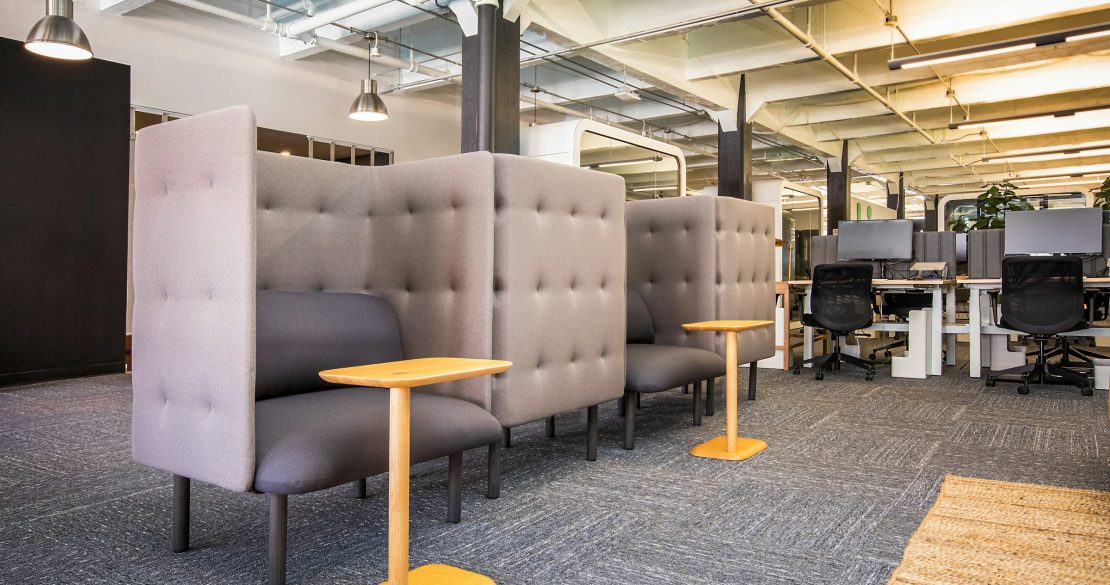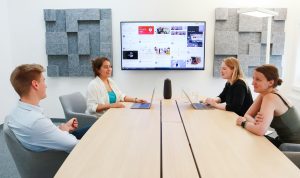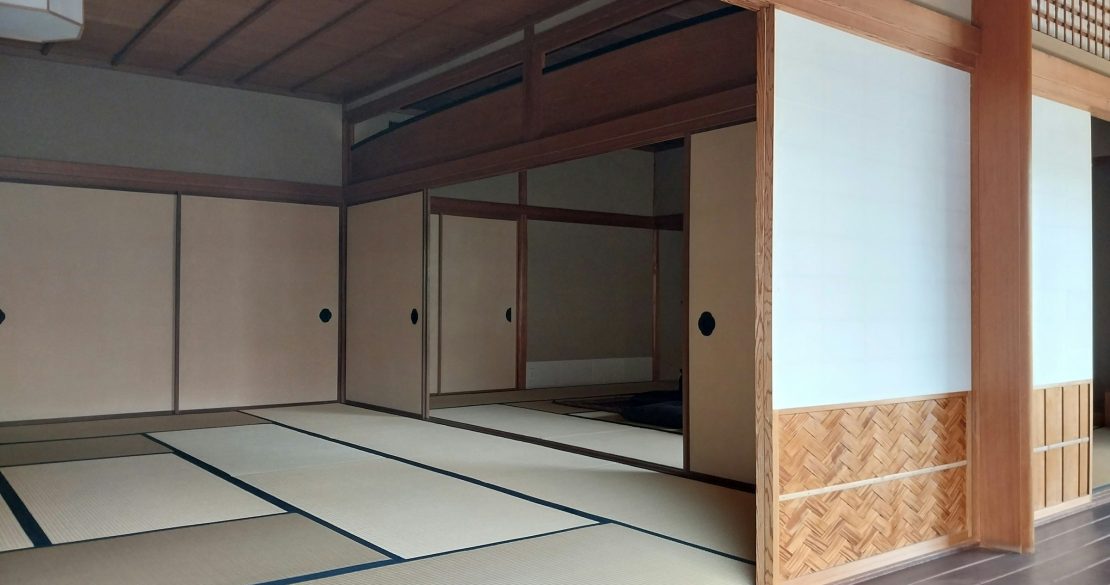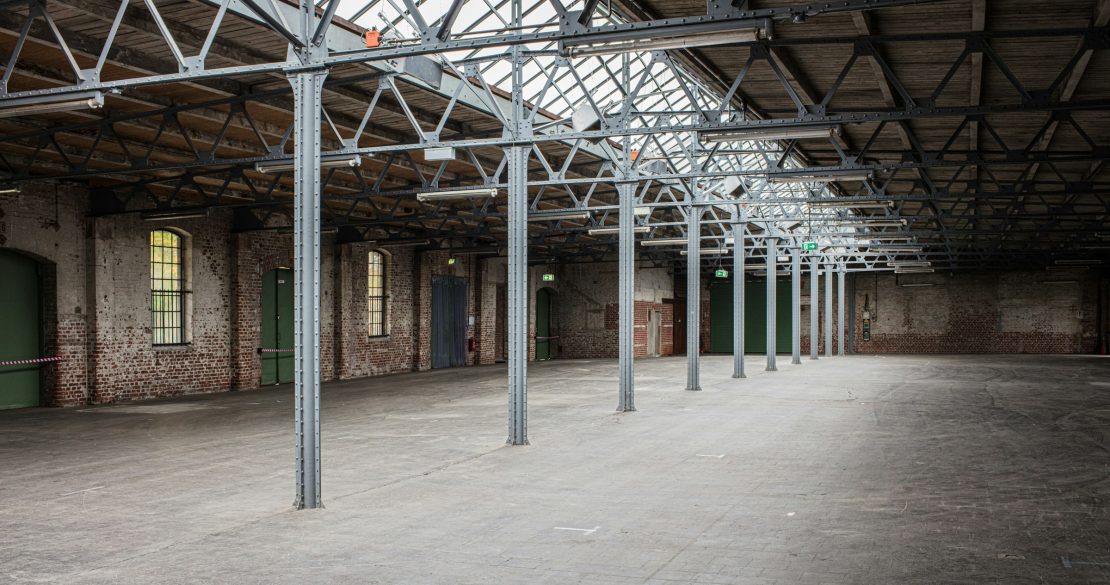In large office spaces, the sky is the limit when it comes to layout and organization of work areas. But there are smaller, more limiting office spaces where creativity is a necessity when it comes to making it feel larger. There are a number of ways to make your small space feel bigger, and Realty Asset Advisors can help.
Table of Contents
Employee Opinions
Light-Colored Walls
Mirrors and Reflective Surfaces
Furniture Placement
Space Saving Office Furniture
Storage
Declutter
Digitize Business Files
Cable Organization
Open Office Layout
Flexible Work Zones
Going Up!
Incorporate a Break Area
Biophilic Design
Natural Light
Work From Home Options
Final Thoughts
Employee Opinions
Before diving in, make sure to get employee feedback. You don’t want to spend thousands of dollars and hours of time providing a work environment employees ultimately don’t want or need. On the same token, you don’t want to spend all that money and miss adding something your employees agree will make their working lives easier.
Light-Colored Walls
You can’t go wrong with light-colored walls. Lighter colors reflect both artificial and natural light better, opening up the office and making it look and feel larger. Lighter colors offer a lighter, brighter mood, offering stress relief and higher productivity.
Mirrors and Reflective Surfaces
Choose some key focal points around the office and strategically place mirrors and other reflective surfaces to create the illusion of depth, as well as capture artificial and natural light for a lighter, airier, effect that makes any size space feel bigger than its square footage.
Furniture Placement
Make your space feel larger through the effective placement of workspaces. Building designers, architects, and interior designers excel at space planning and furniture placement for the most effective use of space. Considering furniture size as well as placement can help make your office feel larger than it really is. Just make sure to place furniture in a way that won’t interfere with traffic patterns.
Space Saving Office Furniture
Big, bulky furniture pieces can crowd and overpower an already small office space. Opt for lighter, more modern pieces, or select furnishings that can serve multiple purposes. Choose desks or workstations that offer extra storage space like built-in shelves, cabinets, or drawers. Add visual space by opting for exposed-leg furnishings − but make sure to keep the tangle of electronic cords out of sight!
Storage
A big barrier in a small space is storage. Where does everything go? Employees want the things they need on a daily basis close at hand, but you also need to store some of the more infrequently used items, or surplus items waiting to be used – you can’t be constantly running to the office supply store for printer paper and ink cartridges, pens, and more, so you order in bulk and keep the rest aside for when items need to be refilled.
Smart storage solutions include wall-mounted shelving (including corner shelves) and cabinetry, modular storage, under-desk storage, and more. When it comes to freeing up space in the filing cabinet for new files, consider digitizing the archives and recycling or moving hard copies off-site.
Declutter
Keep, toss, donate. It’s how many homeowners do their Spring Cleaning or begin to organize for a big home renovation or move. Transporting unnecessary or unwanted items is a hassle that just makes for more work when you’re trying to settle into the new space.

Decluttering a small office space leads to maximizing the space you do have. If an item has been sitting unused, don’t be afraid to throw it out or pass it on to someone who will benefit from it. Then when you’re ready to start designing for your small office space, you’ll only be working with the things you need and use regularly. Additionally, clean desks and offices reduce visual distractions – another way to boost productivity while reducing stress. You don’t want a workplace like the one in the picture above!
Digitize Business Files
Some offices have whole rooms or large closets dedicated to archived files. These files are closed accounts, completed projects, or otherwise unused. Over time, you can digitize all your records, but starting now with your current clients is a great way to cut down on clutter throughout the office. Accessing shared documents in cloud storage is more efficient than multiple paper copies stacking up on desks for reference during a project. Employees can just point and click, and keep the file open on their desktop rather than have open files and papers strewn all over.
Cable Organization
Nearly hand-in-hand these days with space-saving furnishings is cable organization and management. You can’t have a very visually-appealing exposed-leg desk if there are cords draped everywhere. Choose space-saving desks that also have under-desk cable storage, power banks, integrated outlets and USB ports, cable sleeves, and more can help tame the wild tangle of cords necessary to operate all the devices needed to run your business.
Open Office Layout
Your small office space may not be able to handle the formality of cubicles or separate closed-door offices. Rather than trying to force such compartmentalization in the office, open it up! Shared space gives you and your employees the chance to arrange desks and tables in a way that saves space and offers more room and flexibility. Further, adding wheeled desks, tables, and chairs makes it easier to arrange and rearrange the space for a new, better workflow when needed.
Flexible Work Zones
Hot desking, or not having a set desk in your office environment, is a growing trend that works well when you’re dealing with limited office space. Different seating types around the office – both with and without desks or tables – allow employees a chance for a change of scenery. Providing such a dynamic work environment has been shown to combat burnout, increase productivity, and even encourage and boost collaboration and creativity.
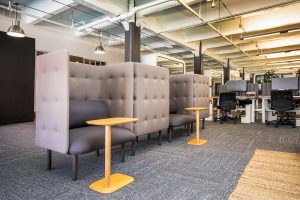
While some employees may prefer a formal desk area, encourage them to explore the different work areas in the office. They may find an unexpected new preference than the static desk and computer.
Going Up!
Unless you’ve found a way to magically add square footage without knocking down walls, your small office’s square footage is unchangeable. One thing you can do to add more space to your smaller office is to utilize wall space. Walls often go neglected in most offices, usually only being painted or hanging some artwork here and there. These actions don’t go unnoticed – the colors, textures, and patterns you use will affect how large or small your space feels.
In this instance, however, we mean using the whole wall for more than just décor. Vertical shelving, wall organizers, and even message boards and calendars are all wall-mounted items that efficiently and effectively organize a space to make it easy to work it, while still allowing employees access to the things they need to do their work.
Incorporate a Break Area
Your space is already small enough without taking up some of it that won’t be used all the time, right? That may be true, but designating even a small area where employees can step away from work, stretch, or socialize with one another on topics outside of the latest project update, will make your office feel more open – and make employees feel like they’re not packed like sardines!

Additionally, employee breaks have been shown to lead to higher productivity, since they provide a time and place to reduce stress, relax with a snack or lunch, or fuel up with another cup of coffee. See our article about Creating a Relaxing Break Room Design for ideas.
Biophilic Design
Small offices benefit from biophilic design in a big way. Studies have shown biophilic elements promote creativity while reducing stress. Biophilic design is a design concept that connects occupants of a building to the natural environment through the use of direct nature, indirect nature, and space and place conditions.
Implement biophilic design in your smaller office space by:
– Wood floors
– Fountains or water features
– Houseplants or other greenery like living walls
– and more!
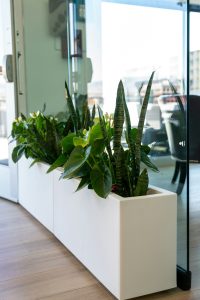
Adding wood floors takes up zero extra space. While it may be difficult to add a fountain, there are a number of wall-mounted water features that will bring this soothing sound of nature into your office. Add houseplants or flowers to common areas, and encourage employees to keep a small plant, even an artificial one, at their desk. Adding a living wall is another popular feature that doesn’t take up much space. It allows you to add greenery in areas of the office where potted plants may take up too much space.
Natural Light
In any size room, but especially smaller ones, natural light is your friend. Not only does it make a small room feel larger, it brings life and vibrancy into the space – feelings the make an office feel more open. Additionally, studies have shown that exposure to natural light in the office leads to happier, healthier employees and an improved office environment overall. Tips for using natural light to your advantage:
– Cluster desks near windows and other natural light sources
– Subtly incorporate mirrors or reflective surfaces to amplify lighting
– Simulate daylight with LED lights, lamps, and warm colors in spaces without access to natural light
Work From Home Options
In 2020, the way the world works changed. Office buildings were closed and employees were sent home. Unfortunately, some did lose their jobs, but those who didn’t were able to work from home utilizing today’s technology and collaboration programs to get things done. Rather than sitting in a stuffy boardroom for a meeting, coworkers or clients Zoomed into home offices to keep the conversation going.
Even after return to work efforts started, many employees advocated to continue work from home programs. Many companies agreed, and offer totally remote positions or hybrid positions (in-office days and remote days) that offer a better work-life balance, resulting in higher productivity.
Final Thoughts
There are a number of ways to help your small office overcome its size. Realty Asset Advisors can help you implement the ideas we discussed here, or any other office size concerns you may have. We look forward to hearing form you.
Contact us today!


